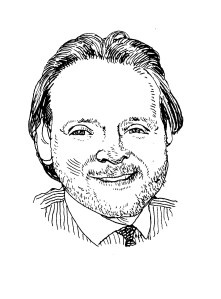As we have seen, year after year, in the New York City investment sales market, multi-family apartment buildings is the asset class that is always in the highest demand. The inherent upside potential within these properties, based on artificially low rents created by rent regulation, keeps investors flocking to this product type and makes regulated apartment buildings the easiest property type to finance.

We have seen community and small regional banks perform much better in New York City as opposed to their sister banks across the country, given their propensity to lend on rent-regulated buildings as opposed to construction and development projects, which cratered most of the banks that have failed during this cycle.
The strength of this sector continues to grow and we have seen very significant and tangible increases in apartment-building volume since the trough the market experienced in 2009.
Unique to the New York City market, walk-up buildings and elevator buildings are generally considered separate asset classes.
During the downturn in 2009, there were only 66 elevator apartment buildings sold citywide, containing a total of 4,511 units. The total dollar volume of sales in this sector was about $568 million.
In 2011, the numbers climbed significantly as we saw 125 buildings sold, containing a total of 9,106 apartments, a near doubling of the unit count. Interestingly, the total dollar volume of sales was $3.1 billion in 2011 (more than five times the 2009 level), mainly due to the huge increase to almost $2.4 billion in the Manhattan submarket alone.
In the walk-up sector, we saw steady increases across the board as well in terms of volume. In 2009, there were 342 buildings sold citywide, containing 5,051 apartments. Total dollar volume was $642 million.
In 2011, the number of buildings sold climbed to 506, with a total of 8,099 apartments. The dollar volume of sales rose to $1.16 billion.
Combining all of these figures, we see that in 2009 there were just 418 apartment buildings sold in both sectors, which grew to 631 sales last year. The number of units sold has escalated from 9,552 in 2009 to 17,205 last year, and the dollar volume of sales has increased from $1.2 billion in 2009 to nearly $4.3 billion last year.
We expect these dynamics to continue as multi-family investors continue to seek out the safety and upside potential of these properties.
Clearly, volume is on the upswing, but what about value?
With regard to cap rates, we have seen steady compression across all of the city’s submarkets from 2010 to 2011. This is the case for both walk-ups and elevator properties.
The other metrics that we watch closely in the multi-family sector are gross rent multiples, price per square foot and price per unit. We have steady increases in all of these metrics with the exception of walk-up properties in Queens and Brooklyn.
The most telling metric that investors look at, however, remains capitalization rates, which continue to compress following the decline seen in lending rates. Cap rates and lending rates have always been highly correlated and, while many participants believe cap rates are back to where they were at the peak, they remain 100 to 150 basis points higher than at the peak. Noteworthy is that lending rates are about 250 to 300 basis points lower today than they were at the peak. Relatively, this sector should be performing much more profitably than it did at the peak.
However, extremely troubling to many operators has been the fact that top line gross revenue has increased handsomely over the last three years (10 to 15 percent); however, net operating incomes have barely increased given the substantial, and inexplicable, annual increases in real estate taxes. This is making the profitable operation of these buildings more and more challenging.
We expect that demand in 2012 will continue to greatly outpace supply. Today it is difficult to keep well-priced multi-family assets on the market for more than a few weeks before they are scooped up by the ravenous demand that exists in the market.
Rknakal@masseyknakal.com
Robert Knakal is the chairman and founding partner of Massey Knakal Realty Services and in his career has brokered the sale of more than 1,175 properties, having a market value in excess of $7.8 billion.


